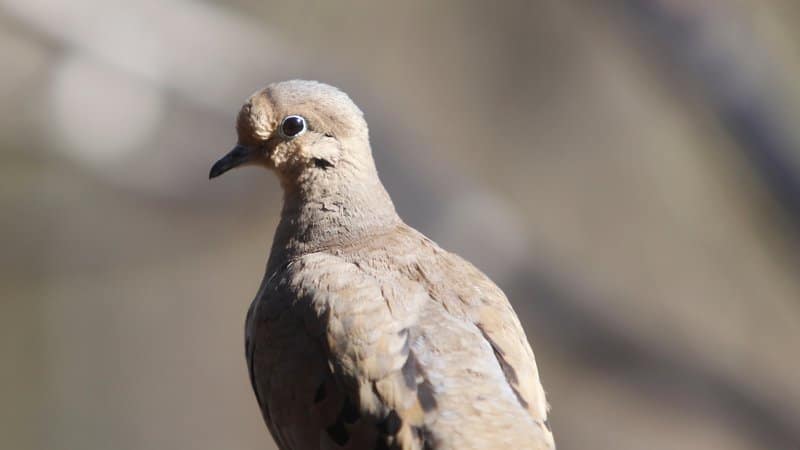December doves offer second shot
BY agfc
ON 12-01-2021

Dec. 1, 2021
LITTLE ROCK – With the opening days of deer and duck seasons in the rearview mirror, some hunters may be looking for a new way to enjoy the outdoors without the crowds. Unlike its original celebration on Labor Day Weekend, the second split of dove hunting holds little fanfare, but still offers excellent opportunities to take aim at some of the most challenging targets in the wingshooting world.
The second split of the 2021-22 Arkansas dove hunting season is Dec. 8-Jan. 15, and hunters willing to do a little post-season scouting may find the second season offers another great opportunity to fill a game vest with the camaraderie of friends and family.
Wil Hafner is the facility manager for the Arkansas Game and Fish Commission’s Potlatch Cook’s Lake Nature Center in Casscoe. Living in the heart of duck country typically has his mind occupied with waterfowl during December, but he always tries to make room for a late-season dove outing if he can find the birds.
“Most of my best late dove hunts have been in cut bean fields and cut rice fields that haven’t flooded for waterfowl yet,” Hafner said. “Some of the same places I find ducks when the water comes up will attract doves, too.”
Fields of young winter wheat also draw doves. Unsprouted wheat seeds may be on top of the ground and good pickings for doves and other birds. Additionally, brushy areas with native seed-bearing plants can hold doves, especially along creeks, rivers and lakes.
Hafner says scouting for doves in December is similar to scouting during early fall. A drive through the country watching for concentrations of birds on power lines can really tip a hunter off to where they need to be each morning.
“I’ll use an iPhone app like OnX, to look up the landowner of the fields where I see the doves congregating,” Hafner said. “If you ask nicely and explain that you’re just wanting to shoot some late-season doves, many landowners will let you hunt as long as they haven’t already leased the hunting rights to deer or duck hunters. It’s always good to follow up with them afterward as well to make sure they know you appreciate the access.”
This time of the year, resident Arkansas doves are joined by migrants from the north, and they tend to bunch up. Hafner says the one-, two- and three-dove groups that were usual in September now may measure in the 10s and 20s.
“The action is going to come in big flocks, and it’s not going to last all day like dove hunting in September,” Hafner said. “Pick out a bird and try not to flock shoot, or you may end up getting embarrassed. They’re just as hard to hit now as they were a couple of months ago.”
To help him focus on one bird at a time, Hafner sets up a decoy spread with a spinning-wing decoy and other imitations that clip to branches of trees using clothespins. Doves, much like ducks, will slow down and try to land near the decoys, offering a better shot than the pass-shooting typical of opening day.
“You’re going to get one or two good shots at flocks coming in, so try to make them count,” Hafner said. “After that, you’ll need to pick up and move to another area. Or If you’re lucky, you might be able to find a place where you can maybe switch gears and chase some ducks.”
A bit of caution for hunters who may double up on duck and dove hunting in December. Don’t leave the lead loads in your pockets when you go back to duck hunting. It is against federal and state regulations to have lead shot in your possession while waterfowl hunting. Better yet, invest a few extra dollars in steel target or dove loads. Not only are they a viable legal alternative, but they don’t deposit toxic lead into the environment where you are hunting.
“If I’m shooting just doves, I’ll still bump up my shot size to no. 6 lead, as many of the doves seem to have a little more stout feathers and fat layers by this time of year,” Hafner said. “If I’m in an area where I might get a chance at waterfowl too, I’ll use no. 4 steel teal-hunting loads. They’re good for doves, small ducks and even a mallard or two if they come in close to the decoys.”
The daily limit on mourning doves and white-winged doves combined is 15, but there is no limit on the larger invasive Eurasian collared-dove. Birds must remain intact until the hunter leaves the field to ensure positive identification.
Visit https://www.agfc.com/en/hunting/migratory-birds/dove for more information on dove hunting in Arkansas.
Recent News
Subscribe to Our Weekly Newsletter E-mails
Don’t miss another issue. Sign up now to receive the AGFC Wildlife Weekly Newsletter in your mailbox every Wednesday afternoon (Waterfowl Reports are published weekly during waterfowl season and periodically outside the season). Fishing Reports arrive on Thursdays. Fill in the following fields and hit submit. Thanks, and welcome!


